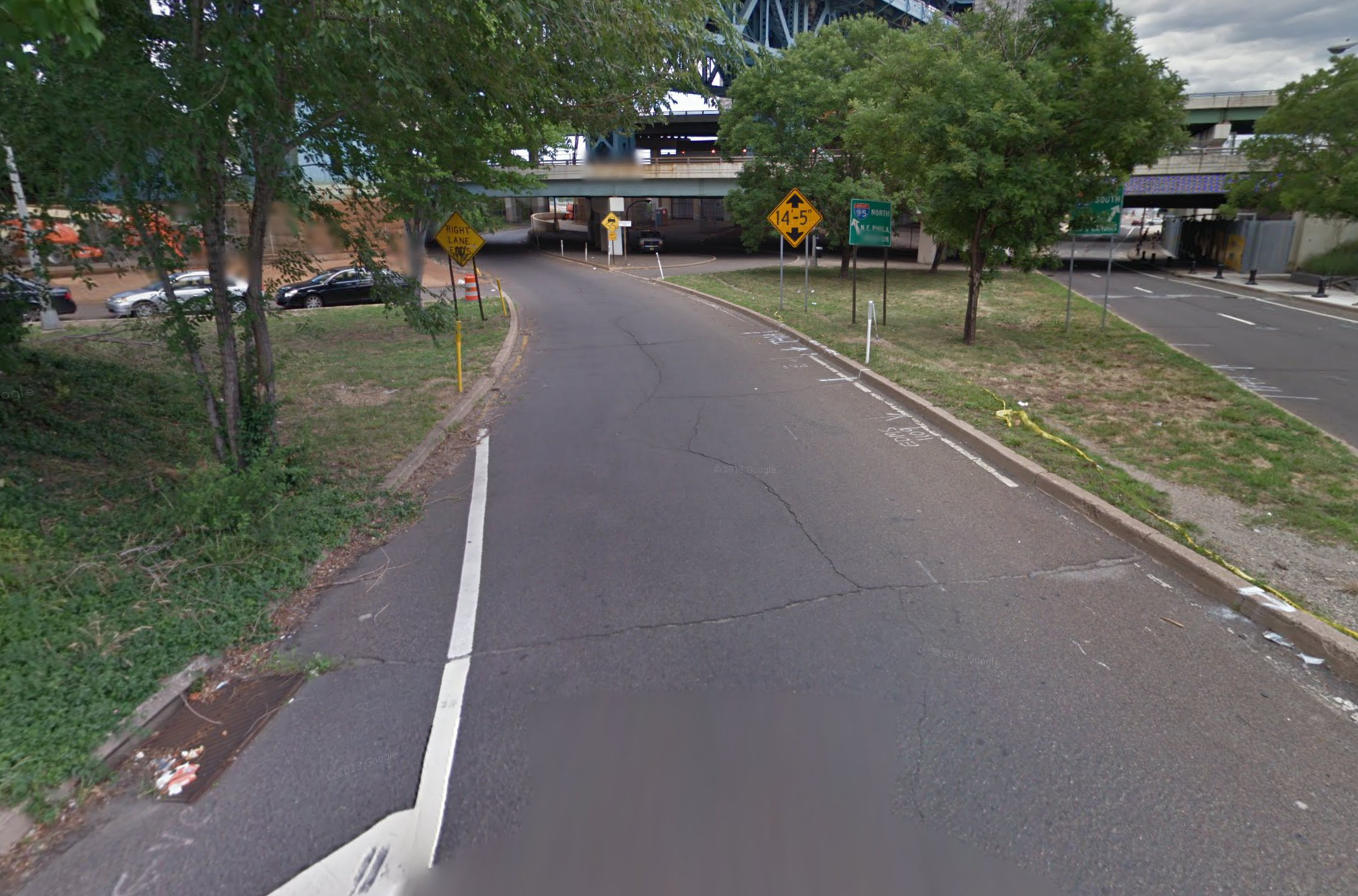Planning Commission questions safety of trail crossing on-ramp

The PCPC doesn’t mind cyclists using what will essentially be the sidewalk on the north side of Race Street from 2nd to the river. But commissioners are worried about a caution-light only crossing of the I-95 northbound on-ramp.
City planning commissioners are fine with the concept of cyclists and pedestrians sharing a to-be-built, 10-foot side path along the north side of Race Street between 2nd Street and Delaware Avenue.
What worries them is how, exactly, those pedestrians and cyclists will safely cross the north-bound on-ramp of I-95.
The proposed path – essentially a sidewalk – would be the north-side counterpoint to its already existing sister on the south side of Race Street. This section of the street, from 2nd Street to the river, is called the Race Street Connector, as its job is to better connect Old City to the waterfront at the Race Street Pier. It and other in-the-works connectors on key east-west streets are an important component of the city’s plan to better tie waterfront neighborhoods to the river, and the Race Street and other connectors are also part of the city’s trail network.
At Tuesday’s Philadelphia City Planning Commission meeting, city planner Jeannette Brugger told the commission there would not be a stop light at the point where the cyclists and walkers would cross the drivers’ route onto I-95. But there would be a blinking caution light, triggered by the cyclists and walkers, to warn cars. And signs would alert both drivers and non-drivers that they could be crossing paths.
Brugger said the north side portion of the connector would be a rare west-bound route for cyclists to take from the river back into the city. “There are a limited number of two-way connections,” she said. They can travel out of their way to make the west-bound trip, but more commonly simply travel the wrong way on the existing path to return, she said.
The Delaware River Waterfront Corporation, the quasi-city agency that manages city-owned property on the Central Delaware and is overseeing implementation of the city’s long-range master plan for the area, is overseeing this project, Brugger told the commission. DRWC has received an easement for the north-side pathway from the Delaware River Port Authority, and has also received approvals from the streets department and PennDOT, she said.
What was being requested of the commission, Brugger said, was just their blessing for cyclists to use the same side path as pedestrians.
None of the commissioners minded the sharing part, and they gave their approval, which will be forwarded on to the streets department. But they included a proviso expressing their safety concerns regarding the pedestrian/cyclist crossing of the highway ramp, and asking DRWC and all others involved to take another look at the proposed warning system.
“It’s a little scary,” said Commissioner Patrick Eiding. He suggested that warnings about cyclists and pedestrians crossing the ramp needed to be posted far enough from the crossing to give motorists warning.
Eiding said he’d never heard of such a crossing, but Commission Chairman and Deputy Mayor Alan Greenberger and Brugger pointed out that near the stadium area, pedestrians walking on Broad Street sidewalks cross I-76 and I-95 ramps without signals.
Commission Vice Chairman Joe Syrnick noted that drivers have a nearby traffic light, and when it is red, they cannot make the turn onto the ramp. So cyclists and walkers would be able to cross safely, he said, but it would have to be on them to watch for that light to turn red.
DRWC Planner/Project Manager Karen Thompson noted that the highway ramp goes uphill, and that slows traffic somewhat. She also said the plan includes changes to the curbline that will require cars to make a sharper turn onto the ramp – a traffic calming device.
Craig Schelter, a former executive director of the planning commission who now runs the non-profit, pro-development Development Workshop, suggested during public comment that a signal for the side path be tied into the traffic light Syrnick referred to.
Greenberger asked Syrnick, who is the president and CEO of the Schuylkill River Development Corporation, whether there wasn’t once a similar blinking caution light where the Schuylkill Banks trail crosses Martin Luther King Drive.
There was, Syrnick said. “But there was the most awful accident there you’d ever want to see or hear about.”
After that, a regular traffic signal was placed there. “It works great,” Syrnick said.
Commissioner Nancy Rogo-Trainer made the motion that the commission approve the bikes and walkers sharing the same path, “with the understanding that the intersection be studied.”
Syrnick added “Say there was a lot of concern about how it would operate.”
The south side portion of the Race Street Connector opened in 2011. The north side has proven even more complicated that the DRWC had projected, in part because users will have to cross the on-ramp, in part because city, PennDOT and Delaware River Port Authority approvals and permissions were all required, in part because once-in-hand grant funding expired before DRPA approvals could be negotiated. DRWC officials have said they have leads on potential new funding, but won’t yet disclose what they are.
WHYY is your source for fact-based, in-depth journalism and information. As a nonprofit organization, we rely on financial support from readers like you. Please give today.



